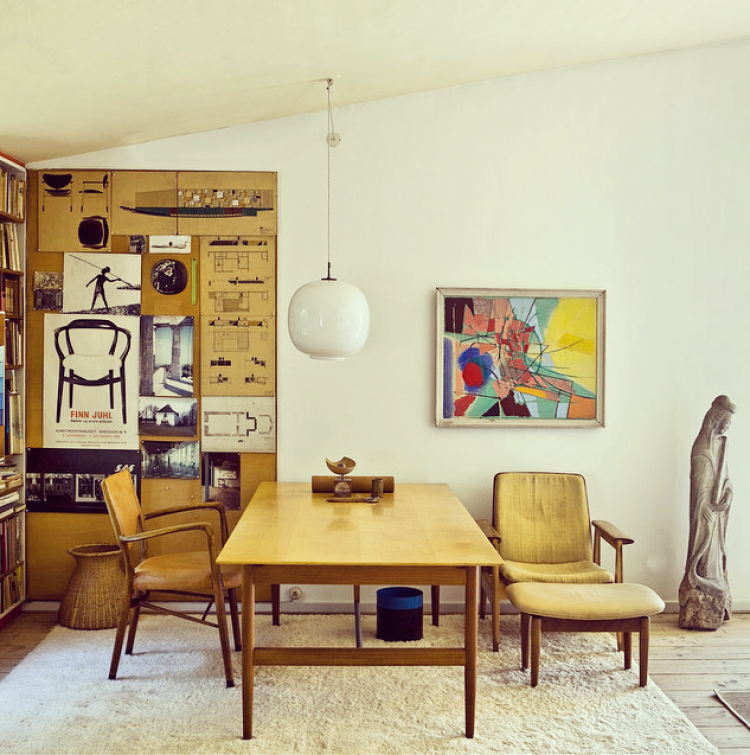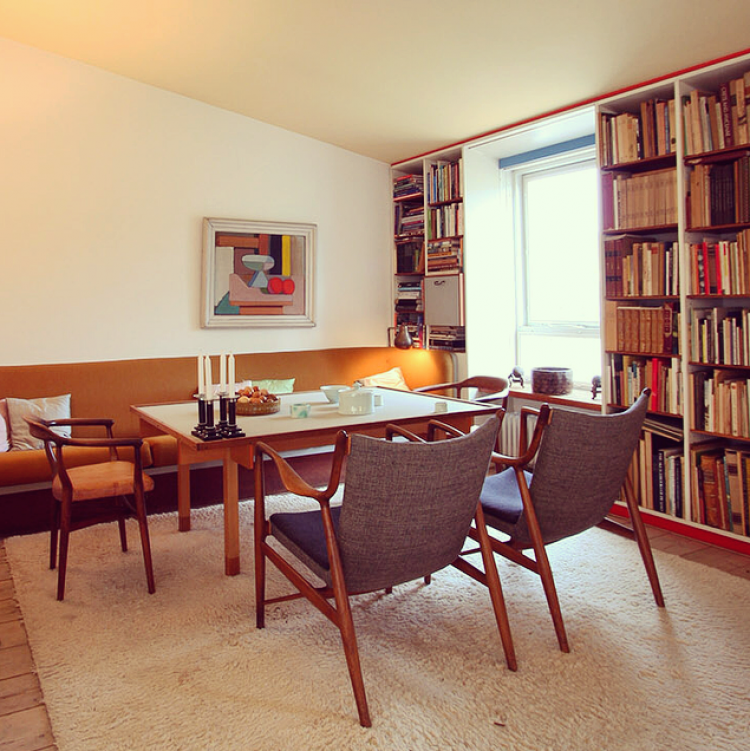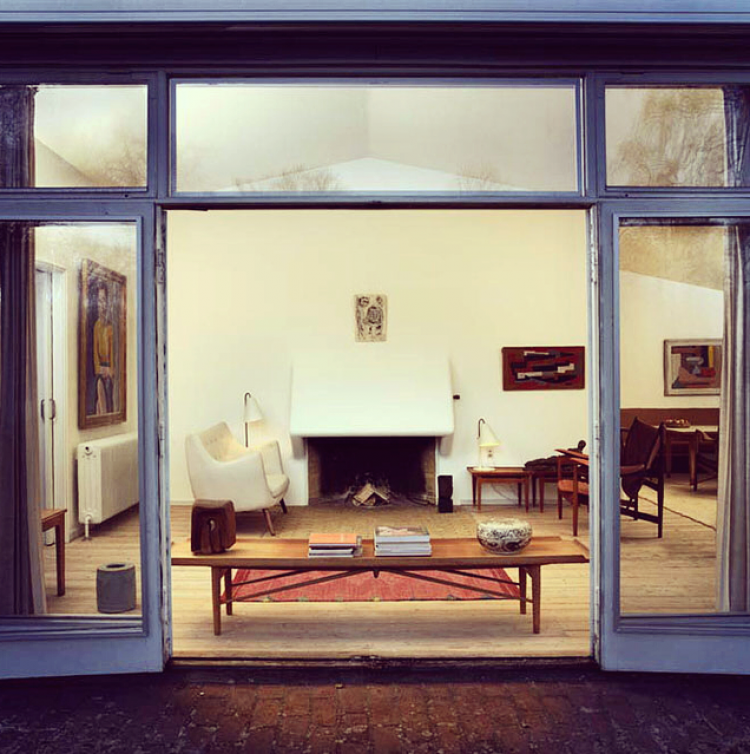07 November 2015 // Anona van der Linde //Antwerp
//THE DELIGHTFUL DANISH
One of my recent obsessions is this image of a particular corner in the house of Danish designer Finn Juhl. It’s something about the painting (a painting of his wife), which I really adore - the colors, the simplicity, the gold frame. Then the Poet sofa, a design by Finn Juhl himself. For me this image shows a perfect unity of classic, modern and natural. Then the wooden floorbeams and the cosy open fireplace that connects to the room through the bricks. The beautiful Paavo Tynell lamp. I can really picture myself sitting here reading a book on a cold winters evening with the warmth of the burning fireplace…
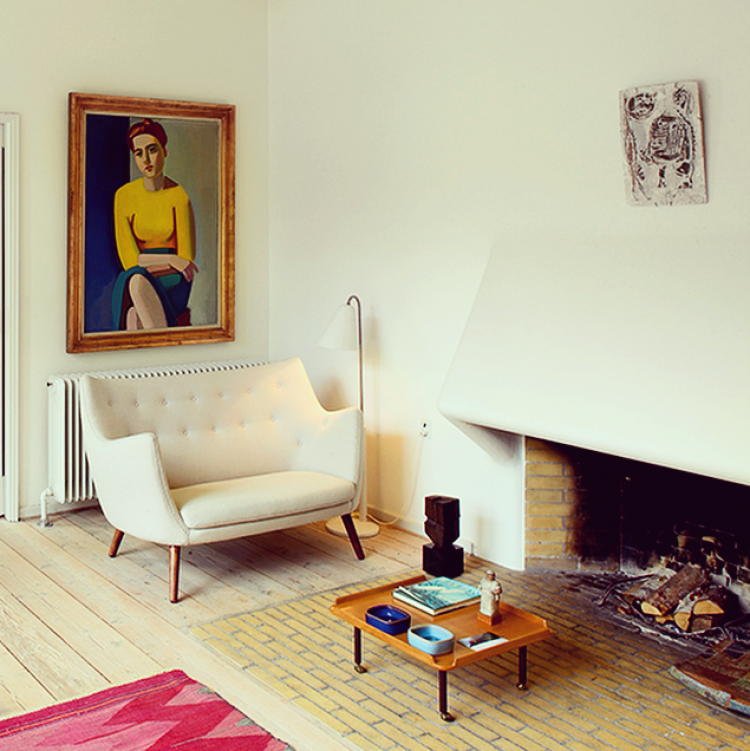 Living room in the house of Danish designer Finn Juhl (1912-1989)
Living room in the house of Danish designer Finn Juhl (1912-1989)
My interest in design started when I was young. My mom and dad have a great collection of Art Nouveau/Deco items and Bakelite (a predecessor of plastic from the 1930’s), having been collectors for quite some time. So for how long I can remember they (and me, dragged along) have been going to antique and fleemarkets to look for collector’s items. Every week on a Saturday morning my dad would come home with new ‘finds' after being to the fleemarket in Rotterdam. I soon started developing my own taste, which at first was a curiosity for 1960’s space age items and interiors. Especially wanting the Eero Aarnio hanging bubble chair and the folding chair. Hoping someday my dad would come home with one of these.
 Hanging Bubble Chair by Finnish designer Eero Aarnio, 1968
Hanging Bubble Chair by Finnish designer Eero Aarnio, 1968
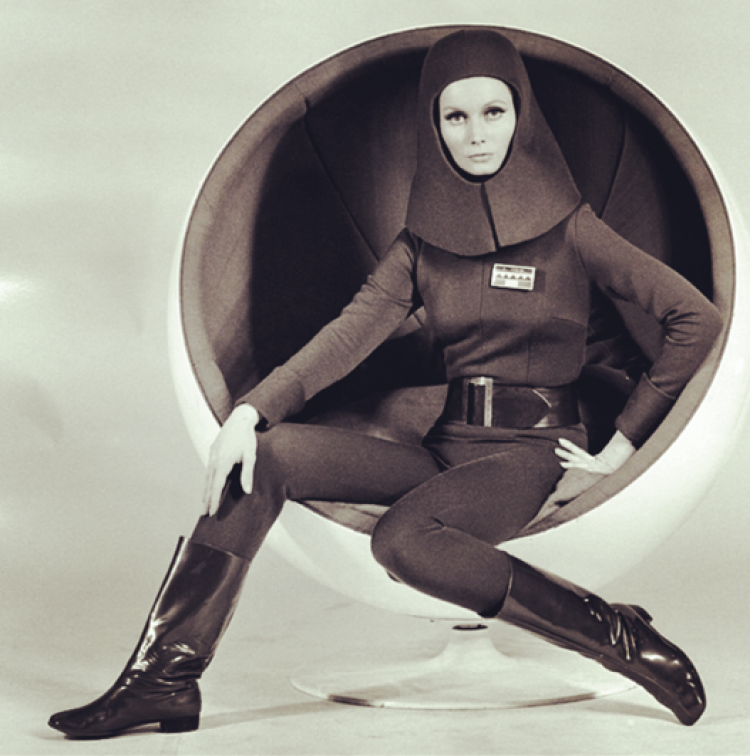 Catherine Schell in the Eero Aarnio Ball Chair, designed in 1966
Catherine Schell in the Eero Aarnio Ball Chair, designed in 1966
With everything my parents taught me, my taste often switched, from the 60’s design to art deco to the modern century minimalist white architecture by Le Corbusier and Mies van der Rohe. Nowadays I’m fascinated by the darker, wooden materials of Scandinavian design, and I notice that I’m looking for more ‘natural’ furniture and interiors. In my mind the whites are slowly being replaced by darker colors. I guess with the years you’re taste develops and becomes more and more ‘you’, reflecting your personal growth.
So, back to this house I was telling you about…
Finn Juhl studied architecture, although initialy he wanted to go to university to study art history. You can see in the images that art plays a big part inside his house and that it’s an inspiration for his designs. He was a keen collector of paintings, sculptures, carpets and vases; which all have a distinct place in his home. Even though he studied architecture, he designed only a few houses in his life, including his own house, that was build in 1942. He devoted the bigger part of his life to designing furniture, but this isn’t so unusual, seen that his architectural theory was that a building should be designed from the inside, starting with the furniture.
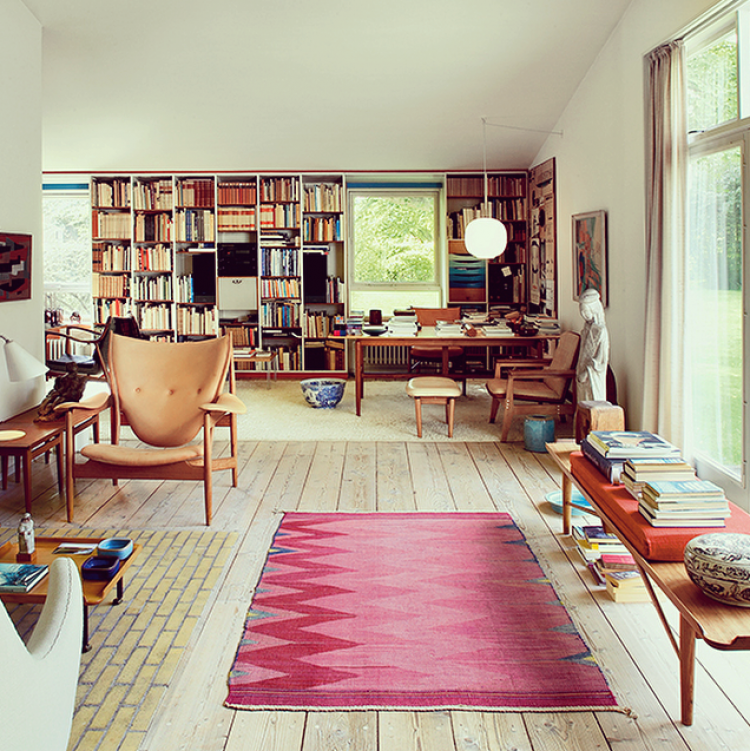
Obviously his own house was build through the use of this theory, starting the design process with the furniture, working itself from the inside to the outside. Furniture created the room, and the room created the facade. Finn Juhl wanted to create a house where every detail was designed and thought about by himself, making the overall a very coherent place. His home presents a gradual flow between the different areas, instead of a collection of individual rooms - although each room clearly has his own function, the rooms aren’t seperated by doors - you can see into every next room when you walk through the house, and in every room there is a view of the garden.


Natural light in relation to the room was a very important factor to him. The ceilings are painted a pale light yellow color, so when the ceilings reflect the light from outside, they resemble the roof of a tent with the light shining through. His thought was to create an overall interaction between furniture, art, color and light. He did a really good job at this, and one of the best parts in his house where this can be found is that corner in the living room; where the sofa stands beneath the painting of his wife, around the white brick heart in the middle of the room. It’s the composition of the textures, the light and the colors that work so well together.
If you want to go see it for yourself, you can! In 2008 the house opened as a museum. It can be found in the small town of Ordrup, Denmark, 12 kilometres outside of Copenhagen.
